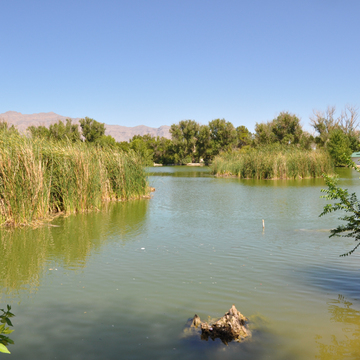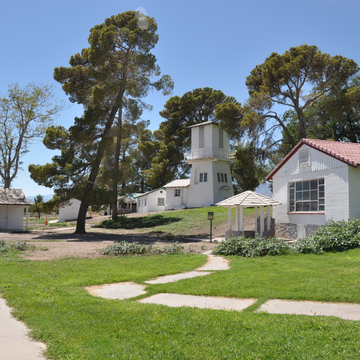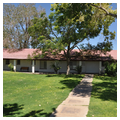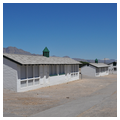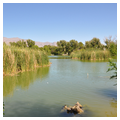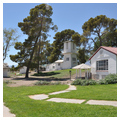Though only fifteen miles northwest of downtown Las Vegas, the old ranch, set in a quiet spot in the valley, feels much farther away. Natural springs made the area a watering hole for prehistoric animals and humans, and, later, a Native American campsite. However, its poor grazing, hot climate, and distance from any urban center discouraged development until the early twentieth century. The first owners of this property eked out a living on a small ranch, but it was not until the 1940s that Tule Springs flourished as a dude ranch, whose guests consisted mostly of socialites waiting for their Nevada divorces. The ranch could accommodate ten to twelve guests. In the 1960s, as Nevada's divorce industry declined, the property became a cattle ranch and then, in 1977, a state park, with little change in its dude-ranch appearance.
Most of the twenty-one buildings in the complex are one-story structures with concrete-block walls and wood-frame gable roofs. The core of the ranch is a cluster of buildings around a low hill, with tall trees, lawns, and roaming peacocks. To the north, the animal buildings and caretaker's house stand in a row running east-west. Just to the north of these is a large barn. Many of the buildings are closed to the public, although the grounds are open.




